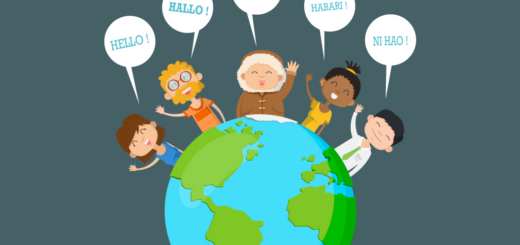What is Back Translation, and When Should You Use It?
What is Back Translation?
Otherwise known as reverse translation, back translation is a method of quality assurance that helps corporations and industry leaders produce high-quality and accurate translations for their assets of choice. This form of translation occurs when the translated product is then reverted back into the original translation you started with, undergoing a thorough comparison by a skilled linguist. The process is done using a word-for-word reconciliation process that is designed to avoid ambiguities and discrepancies.
As both products are evaluated for accuracy and customer alignment, the back translation specialist will evaluate any possible differences in meaning between the source text and source language through the translation process. You can then work with the back translator to reconcile any differences, preserving the intended meaning of your text. We do want to note: while this can take a few extra steps or a bit more time, it can be worth it to get a more nuanced and specific end result for your target audience.
In this article, we’re digging into why this process can hold value for your organization, specific possible use cases, and instances where you may choose a different form of quality assurance.
Why Companies Choose the Back Translation Method
Companies may choose to leverage back translation when they want to have a bit of control over the quality control process, as this method of quality assurance is known for being thorough and precise.
Since back translation allows you to limit your liability while ensuring that you’re putting out the most accurate and on-brand information possible, companies may potentially boost their profits for just a fraction of the total marketing cost—avoiding potential branding faux pas and presenting their best, most polished brand presentation in every asset.
When to Use Back Translation
There are many different instances where businesses may choose to use back translation to enhance the translation quality of their branded assets. We’ve listed a few examples below:
Medical
The medical field is known to produce intensely personal and vital information to a broad base of users. Having inaccurate content can have severe consequences, and can even result in harm under specific circumstances. Examples of possible opportunities for back translation in the medical field include:
- Patient records and medical questionnaires
- Medical health forms (such as HIPAA forms and protocols)
- Patient care instructions (such as discharge care) or instructions for medical devices
- Pharmaceutical documents or use instructions
- Patient billing and insurance information (such as documentation for international cases or patients)
- General branded marketing assets (i.e., for internal use or public channels)
- Clinical research and documentation for clinical trials
- Laboratory documentation or results
While a common back translation process for this industry includes bilingual translation between English and Spanish, healthcare is an international need that requires a diverse range of language services across dialects.

Legal
The implications of the legal field stretch well beyond international borders. Between the high-risk nature of the field and ongoing regulatory requirements, institutional review boards and legal experts generally agree that machine translation may not be enough for the demands and sensitive nature of the field.
Professional translators may be asked to go through a final translation step using back translation, leveraging the original source text to assess the true intended meaning of the translation. Using back translation in this context ensures that all parties involved in a legal transaction are operating with completely accurate information, which is vital to the integrity of any legal case.
Certain instances where back translation may be used in the legal field include:
- Translation of contracts, client files, and court memorandums
- Confirmation of testimonies from key witnesses or individuals
- Translation of pieces of evidence
We do want to note: while back translation may not be necessarily required in these instances due to other forms of quality assurance in the court system, it is a helpful tool to preserve all forms of nuance and meaning that can be lost between languages. Court officials may choose to invest the resources in an effort to assure both sides of the case that they are getting the fairest and just process possible.
Data
Data has garnered a lot of attention over the past few years, with the launch of several new AI- and machine learning (ML)-based ventures. Most notably, we’ve seen a major spike in the use of back translation for data augmentation.
This strategy allows additional, more intricate data points to be extrapolated from any currently existing data. This is great for providing more in-depth information about these new tools and platforms, giving them a more advanced and human-forward user experience from their launch.
Back translation is responsible for this, providing additional cultural context and meaning to different sets of related words in a given data set—which can make the tool more accurate and effective.
Back translation can also be useful for information retrieval across languages, better preserving searcher intent for foreign information gathering and presentation (similar to a Google search).
Finance
There are many important forms of documentation and transcription that occur in finance. Any element of the financial transaction, from customer service requests and communication to formal financial documentation must be correctly understood and translated to limit institutional liability.
Leveraging back translation in this case helps to limit several possible areas of risk, including confusion regarding contract terms, international compliance issues, and poor investment choices based on customer communications.
Manufacturing
Manufacturing is a $7 trillion dollar industry as of 2023—and is a multifaceted industry that could benefit from back translation across its operations. Communication is essential in this industry, both to clients and fellow vendors. Common areas where back translation can improve overall functionality include:
- Product localization strategies and marketing assets
- Compliance tasks and relevant documentation
- Internationalization efforts with the goal of expanding into new international markets
- Customer support tasks
- Team member training across multiple international sites
- Product use instructions and documentation
When Not to Use Back Translation
Back translation, while useful, has its own set of pros and cons that should be considered to make sure it’s the best possible choice for your needs.
For example—if your work isn’t particularly sensitive or doesn’t require exact accuracy, back translation may not be necessary. Additionally, back translation may not be right for you if you are going for a more creative presentation of your asset rather than pinpoint accuracy—or if your content is more ambiguous in general.
This form of translation can be a more time-intensive and expensive process, which may not be suitable for high-pressure deadlines or projects with fewer resources available. Making these considerations in your decision-making process can save you significant time and cost in the future.
There are other options available for businesses who do work with material that must have accurate translation but may not have the resources to support back translation. For example, a multi-stage review process format may be a more appropriate method of risk management, leading to a more accurate and polished final product without the associated costs of back translation.
For High-Quality Translation, OneSky is the Solution
Accurate translation and shared understanding are essential to the foundation of the world’s daily transactions. Mistranslations happen during the process of traditional translation processes, which is why those in project manager roles may choose to use back translation when working with content in a different language.
From data augmentation to medical use and legal proceedings, back translation provides the opportunity for the clearest and most accurate translation finalization process—resulting in polished final products and proper communication to localize, internationalize, and establish one’s brand or service at a global scale.
If you’re looking for quality translation you can trust, connect with OneSky today. Our team of 1,000+ expert linguists is here to help with your web content and app translation needs—accurately preparing and optimizing your content for consumption in over 50+ languages around the world.
When you choose OneSky for your translation needs, you can be confident that your work is being handled by an industry expert and native speaker in your language of choice, increasing your chances of true localization success and fluency. For more information and to get started today, please visit our website and connect with a translator.








 Written by
Written by 


